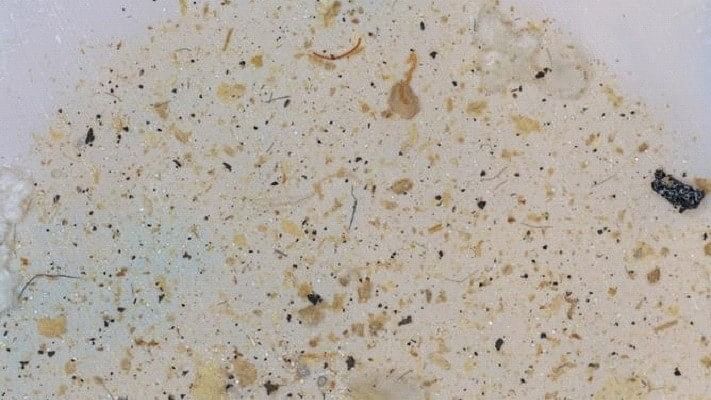
Examples of microplastic fragments isolated from farm soil
Photo credits: Jayita De and Pratik Banerjee, University of Illinois
The search for fertile river plains to grow enough food has driven most human migrations, and desertified lands have displaced millions. As agriculture became more intensive and industrialised, many of our inventions, including plastics, have infiltrated farmlands.
From irrigation pipes to greenhouse films to mulch that suppresses weeds, plastics are ubiquitous on farms today. As the use of plastic implements increases in agriculture, tiny, microscopic fragments—called microplastics—wither off of them and become one with the soil, threatening the food we eat. Once in the soil, it is expensive and almost impossible to separate microplastics.
Recent studies show that microplastics in the soil change its structure and density, alter pH and decrease its water-holding capacity. When plants are grown in such soil, their roots can't spread or absorb enough nutrition. Their yield decreases.
Microplastics-rich soil also hosts fewer soil-dwelling insects like mites, worms, ants, butterflies and moths, which feed on decaying organic matter and increase fertility. Pathogens can hitchhike on the invisible plastic particles, spreading diseases.
Microplastics also affect the composition and the delicate balance of soil microbes. Harmful bacteria thrive on the surface of these specks of plastic and, over time, develop antibiotic resistance. When we consume farm produce, we risk coming in contact with such bacteria. Besides, when earthworms and other soil-eating organisms chomp on microplastics, they transfer it into the food chain. Microplastics are known to cause hormonal imbalance and increased inflammation in humans.
Reducing the use of plastics in our farmlands by replacing them with natural, biodegradable alternatives like paper and wood is the first step towards lowering soil microplastics. In addition, countries also need stricter regulations around the permissible levels of microplastics in soil.